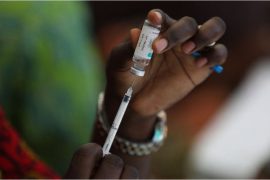
Nigerians and pipo from oda parts of di world dey travel go European kontris, United States of America and di United Kingdom to go find work and look for greener pastures.
One of di places wey pipo dey like go well-well na United Kingdon (UK) wey di capital na London.
But for di adults wey dey UK, more dan one-fifth (20 percent) of dem no dey really find work, dis na wetin official figures suggest.
Di UK economic inactivity rate na 21.8% before, between November and January, and di margin dey higher dan one year ago.
E mean say 9.2 million pipo wey dey between age 16 and 64 for di UK no dey work or look for job.
Di total figure dey more dan 700,000 higher dan before di coronavirus pandemic.
Dem don raise concerns ova di shortage of workers wey dey affect di UK economy.
Di health of di UK economy dey for di spotlight wit di general election wey go happun in di coming months and di major political parties dey pledge to boost growth.
Di UK enta recession end of last year wen di economy shrink for two consecutive three-month periods, but latest official statistics show say di level of unemployment dey steady.
Di figure also show say di wage rise slow again, even though pay still dey rise more dan inflation.
However, di number of pipo wey no dey employed or wey no dey find work actively still dey high in recent years since e rise during di pandemic.
Long-term sickness na one of di main reasons for about one- third of di working-age population wey dey inactive for di labour force.
But oda groups wey dey for di bracket – wey di Office for National Statistics (ONS) define differently include students, pipo wey dey look afta family or dia home, pipo wit disabilities, and pipo wey retire early and discouraged workers.
Dem classify more women as economically inactive compared to men.
Di ONS say di latest figures suggest say di number of pipo wey dey inactive due to sickness reduce in recent months, but e still dey higher dan estimates one year ago.
E add say di chances of pipo wey dey between 16 to 34 to become economically inactive increase but di number of di pipo wey dey between 35 to 64 reduce.
One recent report suggest say pipo wey dey dia early 20s fit no work due to sickness dan di pipo wey dey dia early 40s, wit cases of poor mental health wey dem believe say e dey rise.
Workforce shortages don make Chancellor Jeremy Hunt to set out a series of measures.
Most recently for im budget last week, wey dey target to encourage pipo to find work, or increase work hours.
Policies wey e outline include to reduce di starting rate for National Insurance Contributions from 10% to 8% for 27 million workers from 6 April, along wit one extension of free childcare services for working parents.
But business groups say dem need to do more to make more pipo get work sake of di concerns ova di long-term weak economic growth of di UK.
Neil Carberry, chief executive of di Recruitment and Employment Confederation, add say di cutting NI rates na di “right call”, but no be “silver bullet to encourage enough pipo to work”.
“To get inactivity down, goment need to torchlight childcare, transport and address NHS waiting list dem,” im tok.
“Di budget no add up to di industrial and workforce strategy we really need despite di Chancellor obvious interest for di workforce matters.”
Alexandra Hall-Chen, principal policy adviser for employment for di Institute of Directors, say many companies bin “still dey struggle to access di skills dem need”.
“Make di future goment place tackling skills shortages and increasing labour force participation for di centre of im growth plan,” she add.
‘Disconnect between employers and young pipo’
Chris Bingham, chief executive of energy supplier Greenarc Ltd for West Yorkshire, say businesses need to tink about how to encourage pipo into di workforce, and “give dem more of wetin dem want”, especially to younger employees.
Im say pipo wey dey between aged 16 to 24 no complete dia education sake of di pandemic.
“Dem dey come into a workforce and business community wey still dey struggle to understand how dem go work post-Covid,” im tell di BBC Today programme.
“I tink say a clear disconnection dey between di employer and young employees,” im add, im argue say any future goment need to get “bigger focus on apprenticeships and workplace engagement more dan di blanket university route”.
Work and Pensions Secretary Mel Stride tell di BBC say di UK bin get “veri healthy” labour market and di goment “plan go reduce economic inactivity well well”.
Di goment official forecaster, di Office for Budget Responsibility (OBR), wey estimate say policies on childcare expansion, welfare reform, and personal tax cuts dey predicted to increase di UK labour supply by more dan 300,000.
But di OBR say personal tax thresholds wey dey frozen “go also weigh on work incentives”, e mean say di increase go dey closer to 200,000.
Liz Kendall, Labour shadow work and pensions secretary, say millions of pipo bin dey “locked out of work” sake of long-term sickness on di “Tories’ watch”.
She tok say Labour fit cut NHS waiting lists as part of dia plan to get more pipo to work.
As well as di economic activity figures, di ONS also reveal say:
Di unemployment rate dey steady at 3.9% for di three months from November to January, wey di margin bin dey higher dan wetin economists bin forecast.
Growth for regular pay, wey exclude bonuses, slow again, but at 6.1% but e still high pass inflation, di rate prices rise by 2%.
Na 203,000 working days bin loss due to strike action across di UK for January 2024
Job vacancies from December 2023 to February 2024 bin dey down by 224,000 from di previous year but dem remain 107,000 above pre-Covid levels.
Di ONS don give warnings ova di reliability of dia jobs market data, wit di survey from wia dem get dia results, sake of say dem get a smaller number of respondents dan wetin dem bin dey get for dia history.
Questions ova di data for di jobs market raise issues for di Bank of England, wey dey use di ONS releases to measure di health of di UK economy.








